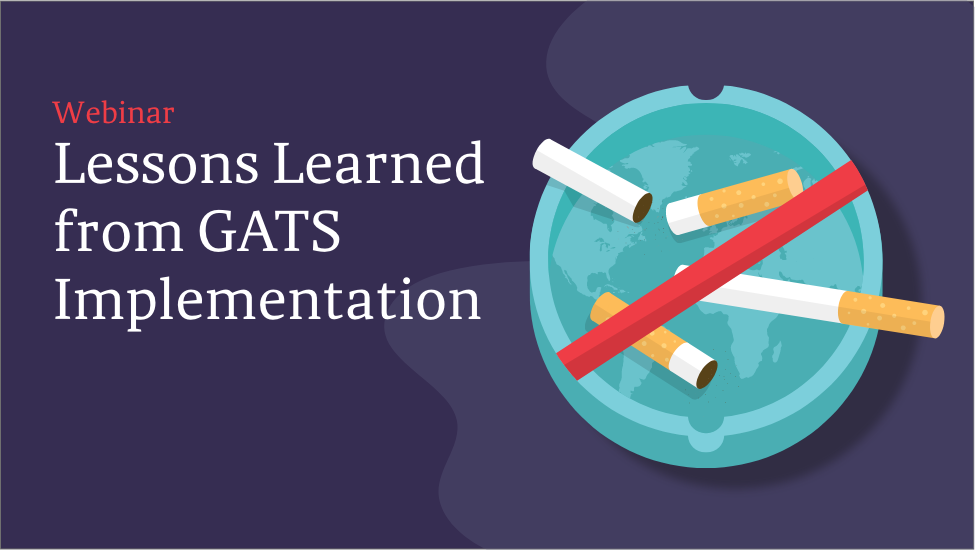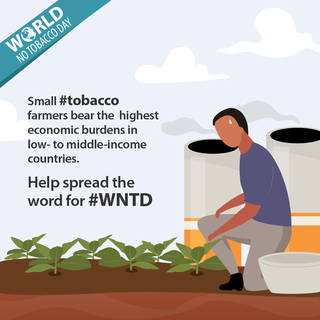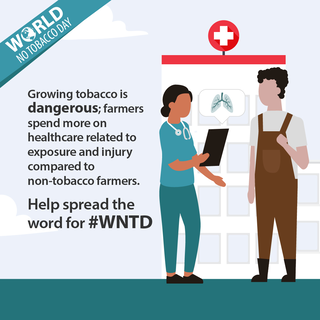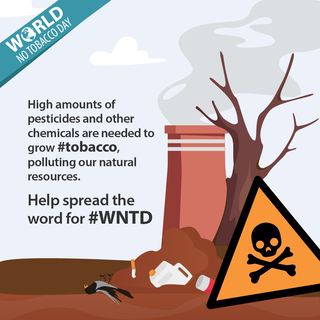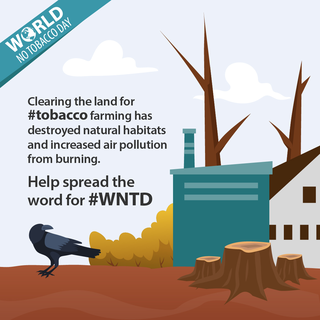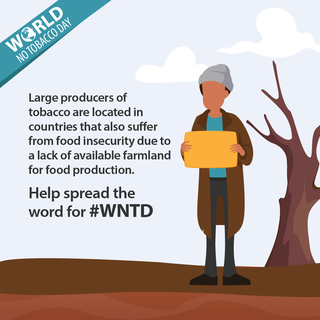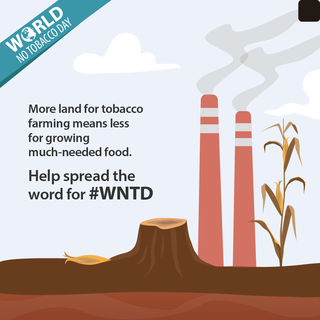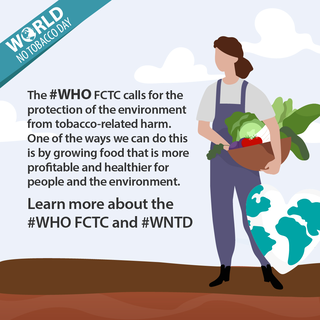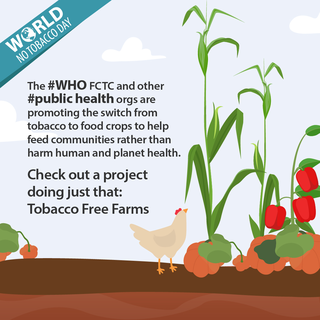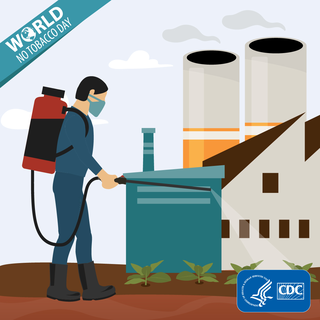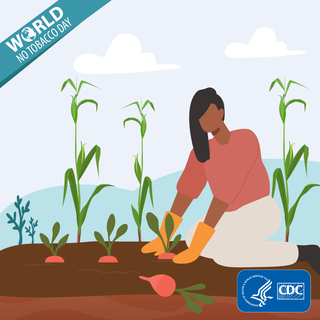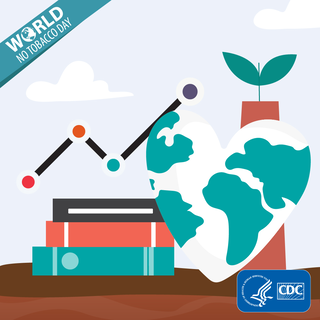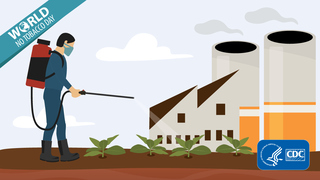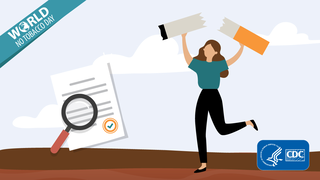Infographic
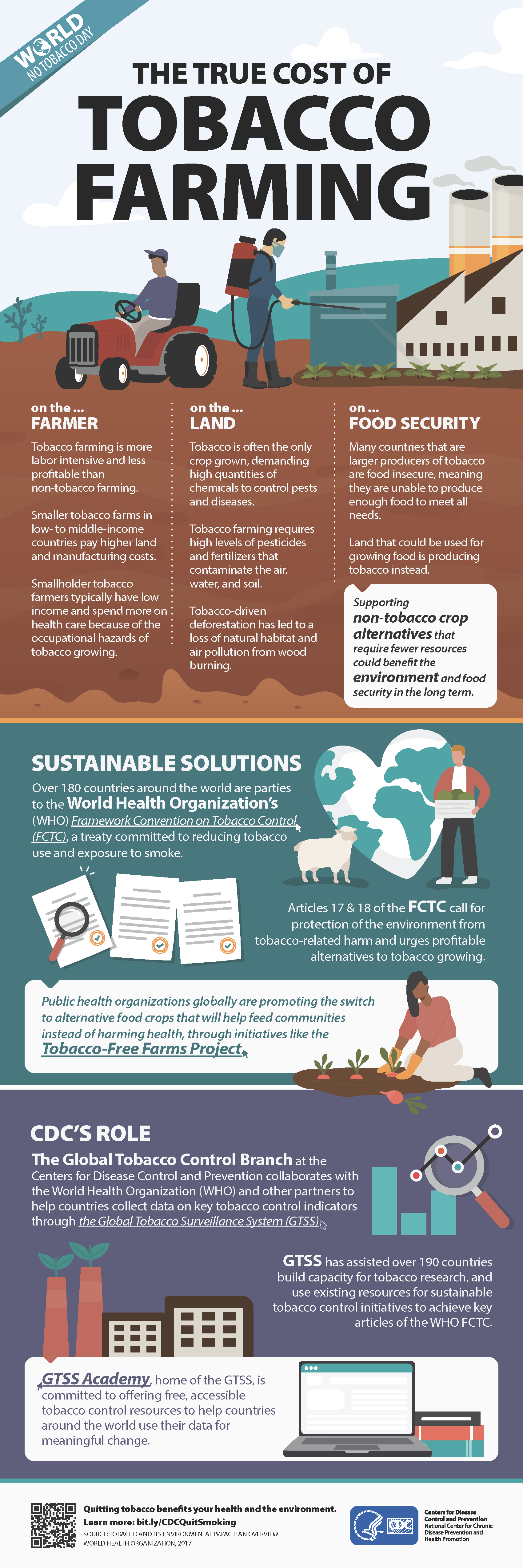
The True Cost of Tobacco Farming
On the Farmer…
- Tobacco farming is more labor intensive and can be less profitable than non-tobacco farming.
- Smaller tobacco farms in low- to middle-income countries pay higher land and manufacturing costs.
- Smallholder tobacco farmers typically have low income and spend more on health care because of the occupational hazards of tobacco growing.
On the Land…
- Tobacco is often the only crop grown, demanding high quantities of chemicals to control pests and diseases.
- Tobacco farming requires high levels of pesticides and fertilizers that contaminate the air, water, and soil.
- Tobacco-driven deforestation has led to a loss of natural habitat and air pollution from wood burning.
On Food Insecurity…
- Many countries that are larger producers of tobacco are food insecure, meaning they are unable to produce enough food to meet all needs.
- Land that could be used for growing food is producing tobacco instead.
- Supporting non-tobacco crop alternatives that require less resources could benefit the environment and food security in the long term.
Sustainable Solutions
- Over 180 countries around the world are parties to the World Health Organization's (WHO) Framework Convention on Tobacco Control (FCTC), a treaty committed to reducing tobacco use and exposure to smoke.
- Articles 17 & 18 of the FCTC call for protection of the environment from tobacco-related harm and urges profitable alternatives to tobacco growing.
- Public health organizations globally are promoting the switch to alternative food crops that will help feed communities instead of harming health, through initiatives like the Tobacco-Free Farms Project.
CDC's Role
- The Global Tobacco Control Branch at the Centers for Disease Control and Prevention collaborates with the WHO and other partners to help countries collect data on key tobacco control indicators through the Global Tobacco Surveillance System (GTSS).
- GTSS has helped over 190 countries build capacity for tobacco research and use existing resources for sustainable tobacco control initiatives to achieve key articles of the WHO FCTC.
- GTSS Academy, home of the GTSS, is committed to offering free, accessible tobacco control resources to help countries around the world use their data for meaningful change.
Source:
Tobacco and its environmental impact: an overview. Geneva: World Health Organization; 2017. Retrieved from: https://apps.who.int/iris/bitstream/handle/10665/255574/9789241512497-eng.pdf
Quitting tobacco benefits your health and the environment.
Learn more: bit.ly/CDCQuitSmoking
Centers for Disease Control and Prevention
National Center for Chronic Disease Prevention and Health Promotion
